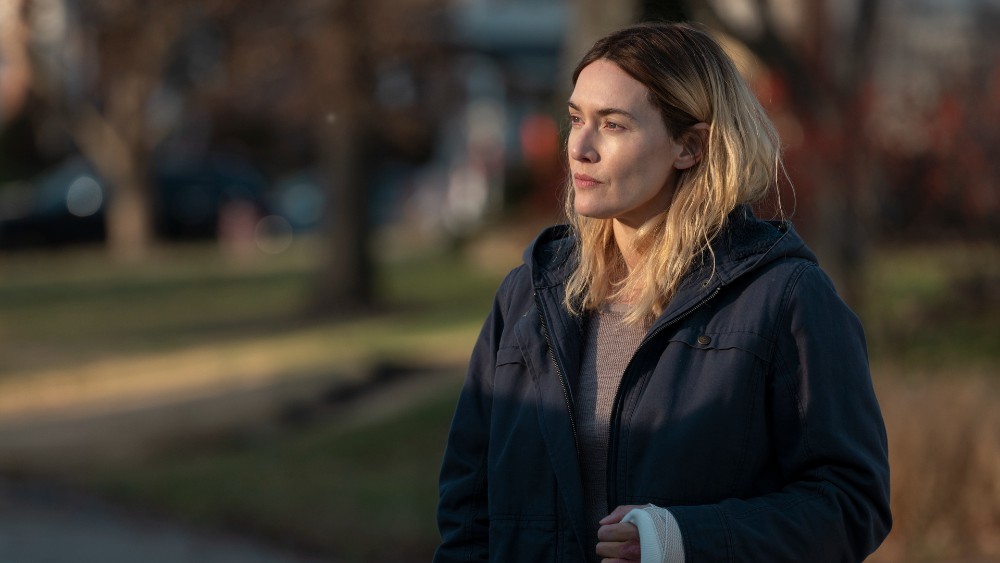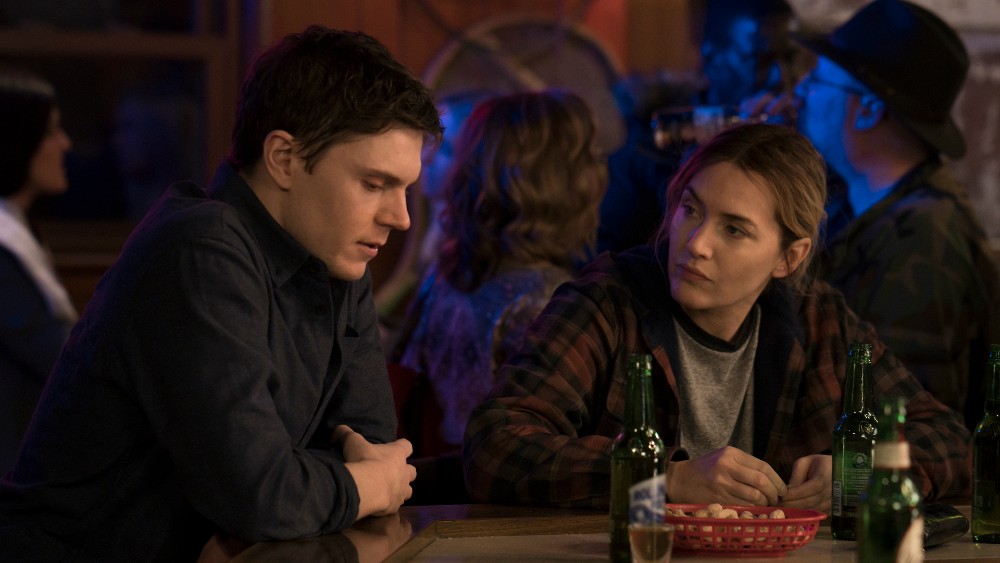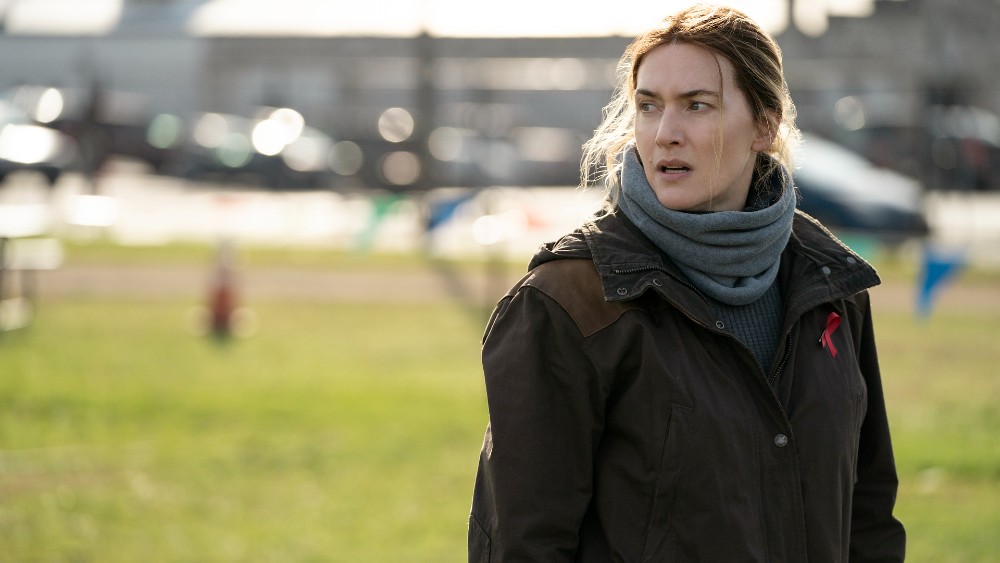
In trying to solve the murder of a local teen, Detective Sergeant Mare Sheehan (Kate Winslet) is forced to confront a past she has tried to avoid. What Mare uncovers might threaten her close friends as well as her enemies. And it’s hard to keep secrets in a tight-knit community where everyone seems to be related.
Created and written by Brad Ingelsby, Mare of Easttown is an HBO limited series now streaming on HBO Max that audiences have taken to, and viewership has increased steadily since the premiere in April.
The entire 7-episode series was directed by Craig Zobel, who previously worked on HBO’s The Leftovers and Westworld, as well as One Dollar on CBS All Access. He also directed the features Compliance, Z for Zachariah, and The Hunt.
Zobel spoke with Below the Line via Zoom.

Below the Line: Mare of Easttown takes place in the suburbs of northeast Philadelphia. How familiar were you with that world?
Craig Zobel: I had never been to Philadelphia before, which I actually think was a good thing. Brad, the creator and writer, was from Philadelphia, so there was definitely a “This is Philly and I know it because I’m from here,” point-of-view. Especially with Kate, it was nice to be able to look around from a kind of anthropological point-of-view.
BTL: I grew up near there, and I can’t remember ever seeing the Tacony-Palmyra Bridge in a film before.
Zobel: It’s fascinating to realize how much of Philly hasn’t been seen before.
BTL: Were the scripts finished when you joined the project?
Zobel: Changes were made, but the drafts of all the scripts were there before I started.
BTL: I’m curious about how you break the scripts down.
Zobel: I can answer that two ways. At the beginning, the pre-COVID part was not very shot-listed. I kind of hit the ground running there. Not a lot of time before we were on set. So in that scenario, you really do lean on each other. [Cinematographer] Ben [Richardson] and I got to know each other really well, really fast.
I knew a certain amount of what I wanted to do, and I knew how much time we had and what kind of day we had to have. So when we set up, even before rehearsal, I would be able to say to Ben, “Here are some things that I think when this thing happens, like we should stay in this angle until we do that move.” So we had some plan, and then during rehearsal, we would start to flesh it out. The whole beginning of the show was done that way. The entire series was cross-boarded across all episodes. Once we were shut down due to COVID, the one benefit it gave us was I felt I could answer very specifically where to put the camera and how to move from there.
Also, we went from 12-hour days to 10-days, “French hours,” although not exactly. So everything in the second half of the shoot was more predesigned. I’ll do a shot list and say, “I think the cameras should face this way and then look over that way.”
It was interesting, because, in the beginning, we had this very organic improv, Ben and I, as far as where the camera was. Then we were able to look at it and see that it worked, and pursue it as a look and a style.
BTL: You shot a lot of material and then shut down for several months. How do you maintain tone and momentum in scenes shot so far apart?
Zobel: I think it’s actually easier for the actors in a way, because if there has been time apart, they are able to be more specific about it. What was harder was making sure tonally that our film grammar didn’t change so radically that all of a sudden it felt very slow.
BTL: Can you talk about working with actors? Kate Winslet, for example, has to go through these emotionally devastating scenes, one after the other.
Zobel: Well, she’s a great actor. There was no shortage of ideas from the get-go. We had enough time together that we were able to develop the type of relationship where we both would be like, “You know, that’s not very Mare.” We approached it as that one beat isn’t a thing that Mare does.
We both felt like we knew the answer to that early on. Well, we kind of knew what Mare didn’t do at least. Then it became, what does Mare do that we haven’t seen yet? What colors can we find?

I find that a lot of working with actors is encouraging them to not feel insecure. Let them feel like they have room to play. I’m a big fan of doing more than one take. Even if the first take is great, I think you should do another one. In fact, I think you should do three takes of anything, just so you feel you’ve explored all of the ways to do it.
It’s not like a play where you get six months to rehearse and really be, “This line means that, and that’s the best way to say it.” It’s not like that here, it’s the opposite. You’re shooting the rehearsals in a way, you know? So my hope was to make sure everybody is listening to the others. And just get as many different colors as you possibly can for a scene. That’s sort of always like my MO.
BTL: At the same time, you’re juggling a lot of storylines and characters. There’s an early scene in a gas station convenience store where you have four different storylines converging.
Zobel: That was a fun one to do. I’m quite proud of some of the shots in that, just in terms of being able to hand off between characters. There is a way to play that scene where Mare is pretty scared of Tony [Delrasso, played by Eric T. Miller]. We shot it where she feels uncomfortable and threatened because Tony is sort of looming. We had shots through the freezer door of her watching him coming in, and some of that still exists in the final cut. I was committed to that idea until the edit room. As I watched the episode, I felt, no, Tony isn’t a threat. The most important part of the scene is Mare and Dawn [Enid Graham]. That was one of those times where I was super glad that after doing the take where Kate was incredibly bothered by Tony, we did one where she wasn’t. And that’s the one we used.
BTL: Unusually for a series like this, you spend a lot of time fleshing out even the minor characters. We learn enough to understand why they behave the way they do.
Zobel: There are a lot of characters, and you want to make sure you honor them as much as possible. It’s a balance. Just by the nature of the medium, there’s lots more of that on the cutting room floor. But this is a show where I cared about everyone’s business in a scene. Unless they were being interrogated, I wanted them to be doing something.
BTL: Mare of Easttown also feels more intimate than most TV series.
Zobel: I made a film, Compliance, that is very extreme close-ups almost the entire time. So that is something I am comfortable with, that I will naturally go to. But that can be jarring, especially in multiple episodes. So Ben and I were always negotiating whether to pull out or not.

BTL: You’ve got to earn that intimacy with viewers. There’s a scene where Zabel [Evan Peters] meets Mare in a bar, and it really feels as if you should end up tight on her face.
Zobel: There’s a scene in the first episode I’m proud of just because it wasn’t a bunch of close-ups. We’re backstage during the basketball awards, and we started with a three-shot of Lori [Julianne Nicholson], Dawn and Mare all in the frame. I felt, okay, this is working, you’re kind of doing the editing with your eyes.
BTL: The scenes with Dr. Graham [Eisa Davis], Mare’s therapist, are especially intense.
Zobel: Her office was a set that had already been used for something else, thanks to a clever redesign by [Production Designer] Keith [Cunningham]. I wanted it to look like a modern building in downtown Philadelphia, to make Mare even more uncomfortable. I think we came in the middle of the day, we had half a day and then half of the next day to shoot all of those scenes.
I will compliment Ben there, too. We challenged each other to avoid doing the exact same shots. So he lit it differently for each scene, putting in a fake sun for the last episode.
There was a sense of play about this series. Keith, Ben, and I, we were making a heavy show. It’s a family drama, so there aren’t a lot of options. It’s not like Space Invaders were going to come in. We were like, how can we push each other?
Because my big worry was making sure this didn’t all end up too heavy. I knew it could have been really heavy, and I know some people are like, “This is a very dour show.”
BTL: But Mare of Easttown keeps evolving. I feel it’s ultimately about accepting forgiveness.
Zobel: If you boil the entire thing down, it’s a story about how if you cannot be, you cannot move on. The name of the town is in the title, so it’s about people’s relationships in their community. If you cannot be a functioning person in your community, there’s no way to be whole. If you are not forgiving yourself, overcoming your own trauma, you won’t be able to be there for other people.
BTL: The plot offers the hope of change.
Zobel: Yes, and that is catharsis, right? Catharsis doesn’t happen in real life the way that it does in movies. It mostly happens through hard work. I hope that is something that at least some people get out of the show. There’s hope if you are willing to assess yourself, your grief and challenges.
Mare of Easttown can be streamed on HBO Max. Check out Below the Line’s previous interview with Cinematographer Ben Richardson.






